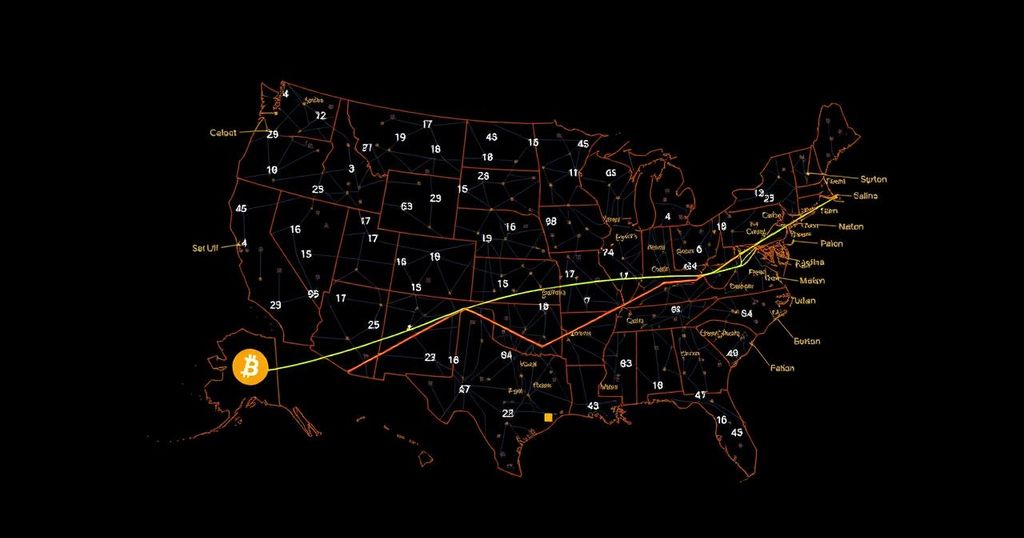Bitcoin Price Trends Contextualized by U.S. Elections: An Analytical Perspective
Recent analyses indicate a consistent trend in Bitcoin’s price dynamics surrounding the U.S. presidential elections. Historical data reveals that approximately two to three months prior to the last three elections, Bitcoin has exhibited significant price declines. However, these declines have typically been followed by substantial recoveries in the months subsequent to the elections.
Notably, during the election cycles of 2012, 2016, and 2020, Bitcoin’s price witnessed pronounced downturns, with analysts from Bitfinex highlighting that similar patterns were evident in each case. For instance, two months before the 2020 election, Bitcoin’s price plummeted by 16%, declining from approximately $12,000 to $10,000 per coin. The 2016 election saw an even steeper pre-election drop of 30%, where the price decreased from around $750 to a low of $500 three months ahead of the election. Additionally, in the 2012 election, Bitcoin experienced a staggering 75% decline approximately 80 days prior to the election date.
Several factors contribute to these price trends, including market seasonality, pre-election uncertainty, and heightened correlations with traditional financial markets. Analysts suggest that the timing of U.S. elections typically coincides with a volatile financial period, particularly during the summer, which influences Bitcoin and other markets alike. The uncertainty associated with upcoming economic and regulatory changes during elections tends to generate a risk-averse atmosphere among investors. For example, the uncertainty that surrounded the 2020 election coincided with the COVID-19 pandemic, leading to sharp volatility in Bitcoin’s pricing.
Moreover, Bitcoin has increasingly shown correlation with traditional markets such as the S&P 500. Analysts noted that fluctuations in the S&P 500 often lead to similar movements in Bitcoin; however, as of now, Bitcoin does not appear to align with these trends given the S&P 500’s proximity to its all-time highs ahead of the upcoming 2024 election.
In contrast to the pre-election declines, historical patterns indicate a post-election surge in Bitcoin’s value. Following the 2016 election, Bitcoin’s price substantially increased as market certainty was restored. This trend was echoed in 2020, wherein Bitcoin experienced a remarkable surge of about 320% over 160 days post-election, fueled by renewed market confidence and economic recovery initiatives. In 2016, Bitcoin’s value skyrocketed by over 2,000% within 400 days, featuring a notable 300% increase in just 200 days.
As of November 2023, Bitcoin has encountered a recent decline of over 4%, trading at a price of $59,778. This ongoing trend highlights the significance of historical patterns while considering the implications of electoral events on cryptocurrency markets. Furthermore, investors are advised to remain cognizant of the potential for volatility during these periods while maintaining a longer-term perspective on market trends.








Post Comment